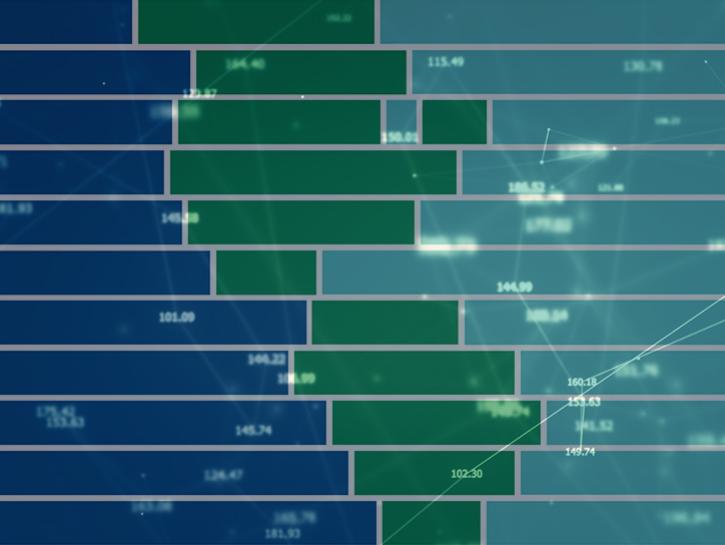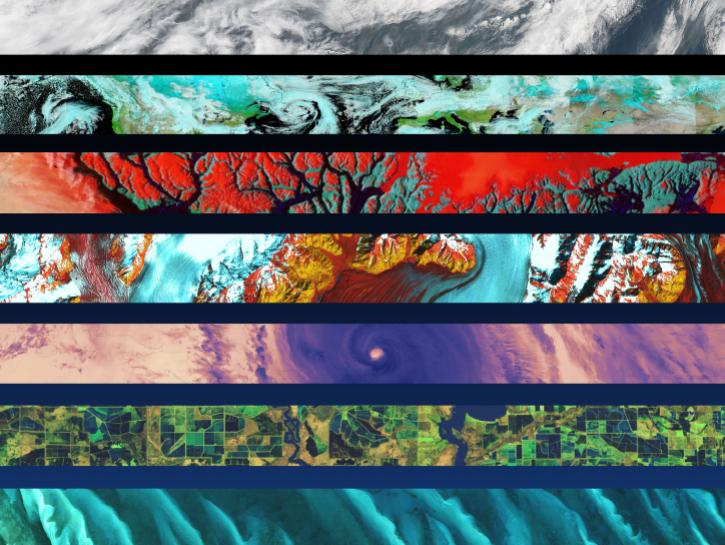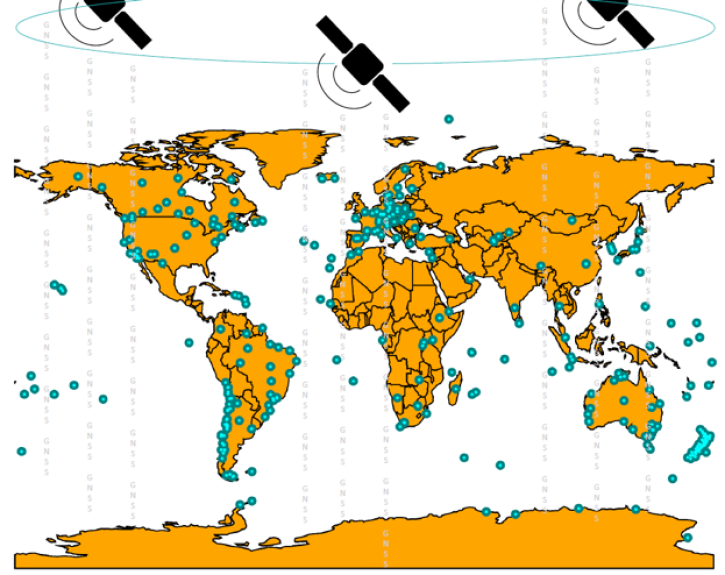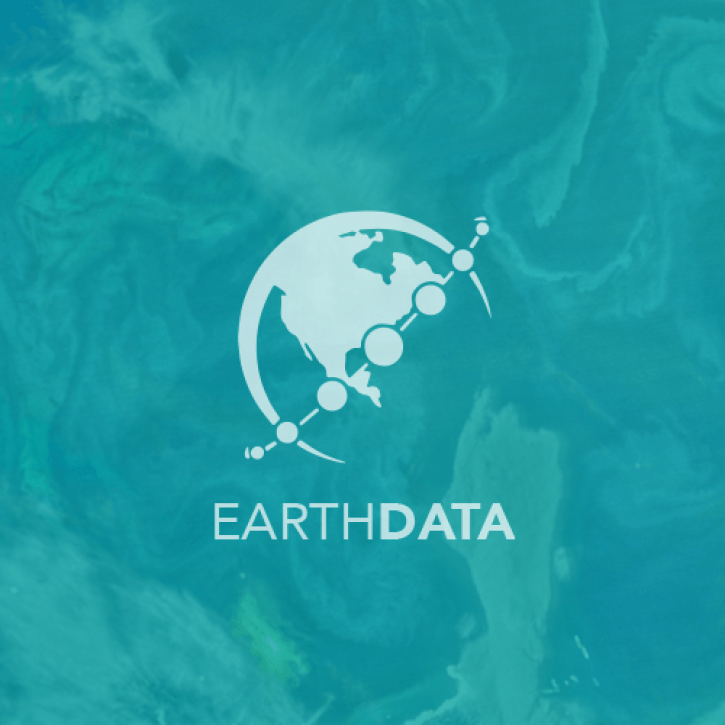Due to the lapse in federal government funding, NASA is not updating this website. We sincerely regret this inconvenience.
Geodetics Data Access and Tools
NASA has geodetics datasets that help researchers characterize the shape of Earth and the motion of its components. Access a range of data and data tools such as AppEEARS, Worldview, and Giovanni to make the most of geodetics data.
Table of contents
Featured Geodetics Observation Method: GNSS
A Global Navigation Satellite System (GNSS) is a space geodesy technology that provides autonomous geospatial positioning around the world. One such system is the U.S. Global Positioning System (GPS), which is made up of 24 satellites, each traveling in a 12-hour orbit. A similar system is the GLObal NAvigation Satellite System (GLONASS) constellation consisting of 24 satellites. Each system is designed so that multiple satellites are within range of any point on Earth in order to precisely determine its location.
GNSS data can used to determine location and positioning around Earth as well as to study geophysics, the motions of tectonic plates and their displacements due to earthquakes, Earth orientation, and atmospheric properties among many other things.
GNSS data can used to determine location and positioning around Earth as well as to study geophysics, the motions of tectonic plates and their displacements due to earthquakes, Earth orientation, and atmospheric properties among many other things.
Join us on Wednesday, July 22, 2015 at 2pm ET to learn how to discover and access the real-time Global Navigation Satellite System (GNSS) data!
Join us to learn more about Global Navigation Satellite System (GNSS) radio occultation science and applications! We will highlight science impacts in the areas of numerical weather prediction, forecasting cyclone genesis, and space weather.
Join us on Sept. 28 to learn about the NASA Making Earth System Data Records (ESDR) for Use in Research Environments (MEaSUREs) Extended Solid Earth Science ESDR System (ESESES) project, whose Global Navigation Satellite System (GNSS)-derived data products enable research on tectonic motion, crustal deformation, earthquakes, tsunamis, sea level rise, extreme weather, and more!
This update to NASA's Crustal Dynamics Data Information System (CDDIS) archive makes accessing all RINEX data easier and more transparent for the Global Navigation Satellite System (GNSS) user community.
Geodetics Datasets
| Dataset | Platforms | Instruments | Temporal Extent | Location Keywords | Spatial Extent | Data Format |
|---|---|---|---|---|---|---|
| Global Navigation Satellite System (GNSS) IGS Final Analysis Center (AC) Station Positions/Velocities (no covariance matrix) product from NASA CDDIS - Cloned | Beidou, Galileo, GLONASS, GPS, GROUND STATIONS, QZSS, IRNSS, SBAS | Beidou P, Galileo P, GLONASS P, GPSP, GNSS, QZSS P, IRNSS P, SBAS P | 1992-01-01 to Present | GLOBAL | N: 90 S: -90 E: 180 W: -180 | SINEX |
| Global Navigation Satellite System (GNSS) IGS Final Analysis Center (AC) Troposphere Zenith Path Delay (ZPD) product from NASA CDDIS | Beidou, Galileo, GLONASS, GPS, GROUND STATIONS, QZSS, IRNSS, SBAS | Beidou P, Galileo P, GLONASS P, GPSP, GNSS, QZSS P, IRNSS P, SBAS P | 2000-01-01 to Present | GLOBAL | N: 90 S: -90 E: 180 W: -180 | SINEX |
| Global Navigation Satellite System (GNSS) IGS Final Combined Earth Rotation Parameters (ERP) Product from NASA CDDIS | Beidou, Galileo, GLONASS, GPS, GROUND STATIONS, QZSS, IRNSS, SBAS | Beidou P, Galileo P, GLONASS P, GPSP, GNSS, QZSS P, IRNSS P, SBAS P | 1992-01-01 to Present | GLOBAL | N: 90 S: -90 E: 180 W: -180 | IGS ERP |
| Global Navigation Satellite System (GNSS) IGS Final Combined Orbit Solution Summary Product from NASA CDDIS | Beidou, Galileo, GLONASS, GPS, GROUND STATIONS, QZSS, IRNSS, SBAS | Beidou P, Galileo P, GLONASS P, GPSP, GNSS, QZSS P, IRNSS P, SBAS P | 1992-01-01 to Present | GLOBAL | N: 90 S: -90 E: 180 W: -180 | clock RINEX format |
| Global Navigation Satellite System (GNSS) IGS Final Combined Satellite and Receiver Clock Product (30 second resolution, daily files, generated weekly) from NASA CDDIS | Beidou, Galileo, GLONASS, GPS, GROUND STATIONS, QZSS, IRNSS, SBAS | Beidou P, Galileo P, GLONASS P, GPSP, GNSS, QZSS P, IRNSS P, SBAS P | 1992-01-01 to Present | GLOBAL | N: 90 S: -90 E: 180 W: -180 | clock RINEX format |
| Global Navigation Satellite System (GNSS) IGS Final Combined Satellite and Receiver Clock Solution (5 minute resolution, daily files, generated weekly) product from NASA CDDIS | Beidou, Galileo, GLONASS, GPS, GROUND STATIONS, QZSS, IRNSS, SBAS | Beidou P, Galileo P, GLONASS P, GPSP, GNSS, QZSS P, IRNSS P, SBAS P | 1992-01-01 to Present | GLOBAL | N: 90 S: -90 E: 180 W: -180 | clock RINEX format |
| Global Navigation Satellite System (GNSS) IGS Final Combined Set of Station Coordinates Product from NASA CDDIS | Beidou, Galileo, GLONASS, GPS, GROUND STATIONS, QZSS, IRNSS, SBAS | Beidou P, Galileo P, GLONASS P, GPSP, GNSS, QZSS P, IRNSS P, SBAS P | 1992-01-01 to Present | GLOBAL | N: 90 S: -90 E: 180 W: -180 | SINEX, UNIX compressed ASCII |
| Global Navigation Satellite System (GNSS) IGS Final Combined Station Position Solution Summary Product from NASA CDDIS | Beidou, Galileo, GLONASS, GPS, GROUND STATIONS, QZSS, IRNSS, SBAS | Beidou P, Galileo P, GLONASS P, GPSP, GNSS, QZSS P, IRNSS P, SBAS P | 1992-01-01 to Present | GLOBAL | N: 90 S: -90 E: 180 W: -180 | Text, UNIX compressed ASCII |
| Global Navigation Satellite System (GNSS) IGS Final Combined Station Positions/Velocities Product from NASA CDDIS | Beidou, Galileo, GLONASS, GPS, GROUND STATIONS, QZSS, IRNSS, SBAS | Beidou P, Galileo P, GLONASS P, GPSP, GNSS, QZSS P, IRNSS P, SBAS P | 1992-01-01 to Present | GLOBAL | N: 90 S: -90 E: 180 W: -180 | SINEX, UNIX compressed ASCII |
| Global Navigation Satellite System (GNSS) IGS Final Cumulative Combined Set of Station Coordinates Product from NASA CDDIS | Beidou, Galileo, GLONASS, GPS, GROUND STATIONS, QZSS, IRNSS, SBAS | Beidou P, Galileo P, GLONASS P, GPSP, GNSS, QZSS P, IRNSS P, SBAS P | 1992-01-01 to Present | GLOBAL | N: 90 S: -90 E: 180 W: -180 | Text, UNIX compressed ASCII |
Pagination
SHOWING 10 OF 220
Frequently Asked Questions
Earthdata Forum
Our online forum provides a space for users to browse thousands of FAQs about research needs, data, and data applications. You can also submit new questions for our experts to answer.
Submit Questions to Earthdata Forumand View Expert Responses


